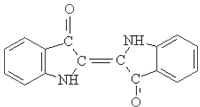Sulphur Black MSDS - Safety Data Sheet Information
Understanding the Safety and Handling of Sulphur Black An Overview of its MSDS
Sulphur Black is a widely used dye in various industries, particularly in textiles. Due to its extensive application, it is essential to understand its safe handling and potential hazards, as outlined in its Material Safety Data Sheet (MSDS).
What is Sulphur Black?
Sulphur Black is a synthetic dye that is primarily used to color textiles, leather, and paper. Its deep black hue is one of the reasons for its popularity, especially in the fashion industry where dark colors are frequently in demand. The dye is created by the reaction of sulphur compounds under specific conditions, resulting in a stable product that can withstand various washing processes.
Importance of the MSDS
The Material Safety Data Sheet for Sulphur Black provides crucial information regarding its properties, hazards, handling, and emergency procedures. This document is essential for ensuring the safety of workers and the environment. It is typically divided into various sections covering different aspects
1. Identification This section outlines the product name, manufacturer, and relevant emergency contact information. It is vital to know who to reach out to in case of an incident.
2. Hazard Identification Sulphur Black may present various hazards. According to the MSDS, potential risks include skin and eye irritation upon contact, and inhalation of the dust or vapors can lead to respiratory issues. Thus, appropriate personal protective equipment (PPE) is essential when handling this dye.
sulphur black msds company

3. Composition and Information on Ingredients This section lists the chemical structure and percentage of active ingredients in Sulphur Black, providing insights into its chemical behavior and potential interactions with other substances.
4. First-Aid Measures In case of exposure, the MSDS details the necessary first-aid steps. For skin contact, it recommends rinsing the area with plenty of water and seeking medical attention if irritation persists.
5. Fire-Fighting Measures Sulphur Black is generally stable, but it can still pose a fire hazard under certain conditions. The MSDS specifies the appropriate extinguishing agents and safety precautions that should be observed in the event of a fire.
6. Handling and Storage Proper storage is critical to maintaining the dye's integrity. The MSDS advises storing Sulphur Black in a cool, dry place, away from incompatible materials. Additionally, it emphasizes the importance of good hygiene practices such as washing hands after handling the product.
7. Disposal Considerations The disposal of Sulphur Black must comply with local regulations. The MSDS typically outlines methods for waste disposal and emphasizes not to release it into the environment.
8. Regulatory Information Finally, the MSDS includes information about legal regulations pertaining to the use and disposal of Sulphur Black, ensuring that companies remain compliant with safety standards.
Conclusion
In summary, the MSDS for Sulphur Black is an essential document that provides vital information for safe handling and emergency response. Understanding the risks and safety measures associated with this dye is crucial for manufacturers and workers in the industry. By following the guidelines outlined in the MSDS, we can minimize health and environmental impacts and ensure a safer working environment.
-
The Timeless Art of Denim Indigo Dye
NewsJul.01,2025
-
The Rise of Sulfur Dyed Denim
NewsJul.01,2025
-
The Rich Revival of the Best Indigo Dye
NewsJul.01,2025
-
The Enduring Strength of Sulphur Black
NewsJul.01,2025
-
The Ancient Art of Chinese Indigo Dye
NewsJul.01,2025
-
Industry Power of Indigo
NewsJul.01,2025
-
Black Sulfur is Leading the Next Wave
NewsJul.01,2025

Sulphur Black
1.Name: sulphur black; Sulfur Black; Sulphur Black 1;
2.Structure formula:
3.Molecule formula: C6H4N2O5
4.CAS No.: 1326-82-5
5.HS code: 32041911
6.Product specification:Appearance:black phosphorus flakes; black liquid

Bromo Indigo; Vat Bromo-Indigo; C.I.Vat Blue 5
1.Name: Bromo indigo; Vat bromo-indigo; C.I.Vat blue 5;
2.Structure formula:
3.Molecule formula: C16H6Br4N2O2
4.CAS No.: 2475-31-2
5.HS code: 3204151000 6.Major usage and instruction: Be mainly used to dye cotton fabrics.

Indigo Blue Vat Blue
1.Name: indigo blue,vat blue 1,
2.Structure formula:
3.Molecule formula: C16H10N2O2
4.. CAS No.: 482-89-3
5.Molecule weight: 262.62
6.HS code: 3204151000
7.Major usage and instruction: Be mainly used to dye cotton fabrics.

